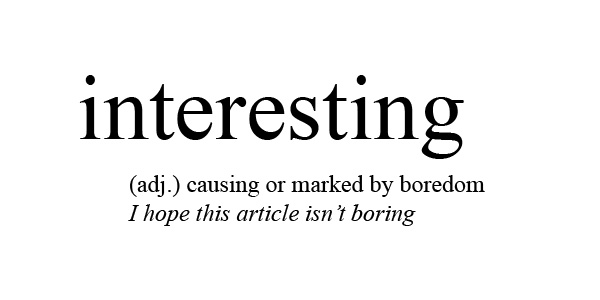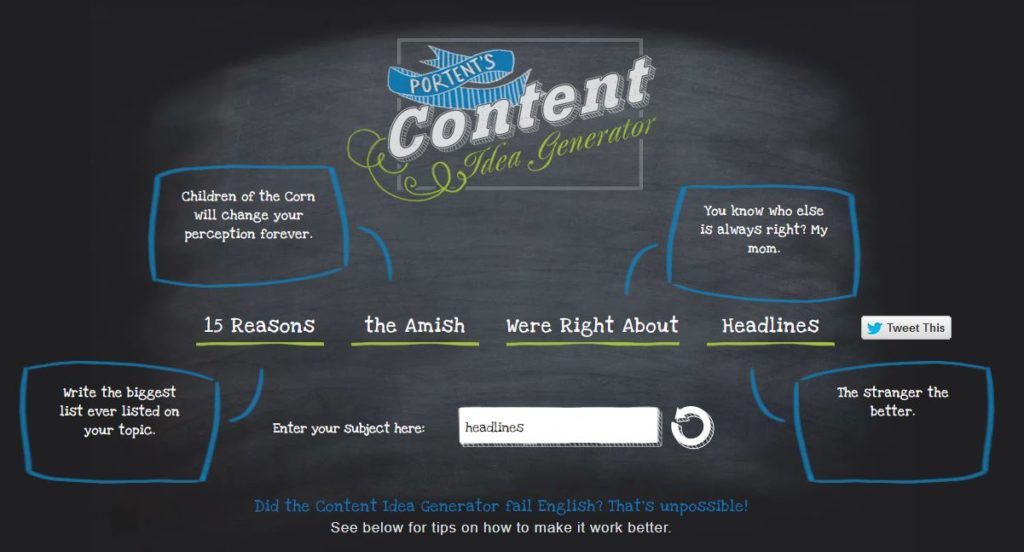Improving Titles for Better Visibility and Getting More Readers
Have you ever had a teacher that just wants to prove that they are better than the kids in their class and assigns a ‘Follow The Directions’ quiz? You will know it if you have ever taken one. This could be one or two sheets of paper with line after line of instructions and lots of little busy work. However, the quiz isn’t about seeing which kids are the best or fastest at busy work. It is a simple exercise in paying attention and following instructions. If you have never taken one of these exams, it goes something like this:
1. Read all instructions before doing anything
2. Put your name in the top left corner
3 – 24. do random stuff like draw boxes on your paper and add some numbers together and yell out random words
25. Ignore all other instructions except for #1 and #2. Complete those instructions and pretend to stay busy while everyone else makes a fool of themselves
Recently I felt the fool after not paying attention to the instructions around post titles. After getting three consecutive posts curated on Medium.com my next submission didn’t go very far. Reflecting on the article, I blame the title. This is the first thing people see. It needs to be a little creative and a lot eye-catching. In this instance, none of that advice was followed and the title read: “How To Take Meeting Notes“.
Blah, ugh. Boring. Bland. Even I don’t want to read that – and I wrote it.
After see the message about it not being curated, reviewing the article, and blaming the poor title, I then rewrote it with the spiffy new messaging stating: “3 Key Elements To Taking Meeting Notes In The Business World“. Not the greatest title ever, but definitely an improvement. While this was discouraging, the world of blogging and writing is not an easy one. There are always more lessons to be learned. But this lesson brings up a good question.
Why are titles so important?
The answer is easy. Human nature. Humans read from left to right, top to bottom. The human eye is drawn to bigger text. The title of an article on the web checks all of these boxes. If you want attention, you need to give people a reason to read past that text.

If you made it this far I wonder how many people will not even realize that the definition provided above for interesting is actually for the word boring: the antonym of interesting. If you really didn’t read the definition then I believe that I have proved the point – titles are important, the rest of the text usually not as much. Like the title says, 82% of people won’t even make it this far having stopped after reading the title.
So how does one go about writing a title that is eye catching so it entices the reader past the initial first glance?
The following are some tips, tricks, and ideas for improving your own article titles and headlines. It isn’t hard – you can put as little or as much effort into it that you want to. Just know that titles are one of, if not the most important function of a post. They draw people in and provide them with the desire to read the article, which is the whole point of writing things on the internet.
On the average, five times as many people read the headline as read the body copy. When you have written your headline, you have spent eighty cents out of your dollar.
David Ogilvy
Option 1: Use a Formula or a Title Maker
This may be the easiest way to generate titles that get attention. A solid formula was created by Jeff Goins and consists of attempting to draw the reader in using a draw in the title. Think of this like fishing. You need the right bait, for the right kind of fish, in an area where those fish are. Even then you might only get nibbles. But if you hit a school of fish that are hungry with the right bait? Better hang on tight because you just hit the jackpot.
Number or Trigger word + Adjective + Keyword + Promise
Easy, straightforward, and this produces results. Pick a topic and make a few claims in the title – just be sure to deliver on those claims in the article! You don’t want to simply generate clickbait with no substance. Here are a few examples:
- Topic: Writing Headlines/Titles Title: 5 Easy Tricks to Write Catchy Headlines (source of the formula, article by Jeff Goins)
- Topic: Taking Meeting Notes Title: 3 Key Elements for Meeting Notes at Work that Cover Your Butt
- Topic: Drinking Coffee Title: Warning! How to Avoid Overdoing It On Caffeine At Work
I guess you could just peruse the tabloids in the supermarket checkout aisle if you need more inspiration here… But there is another way! The internet always delivers. If you don’t even want to think at all for a title then how about using a title generator? Portent, a digital marketing agency has a great Content Idea Generator that could be used to create awesome titles like this one:

I would like to point out – I simply entered “headlines” in the subject area and this is what came up. However, this is definitely an article that I would read. It works!
Option #2 – Be Creative and Come Up With Your Own Titles
Nothing wrong with this approach, but it does take more effort and creativity. However, it can be more fulfilling as the end result are your words in the format that makes sense to you. Hopefully this same result is appreciated by your readers! Here are a collection of tricks and secrets to write your own successful headlines!
- Shorter is Better! Keep Titles short and to the point: While scientific studies originally indicated that the average human can hold 7 numbers in our working memory, “a new study puts the limit at three or four” (article: Mind’s Limit Found: 4 Things at Once). Working memory is the immediate information that we can hold and manipulate in our heads
- Get your flirt on! If you tease and inform it can draw readers in: Attempt to educate in the title, or at least tease the learning that is provided in the article. Hint at the goods to come without revealing everything right up front. The headline should entice readers in, but make sure to back up that lure with a substantial article following the title
- Read the newspaper: The OG of titles and headlines, newspapers have been honing this skill over the past 100 years. There are lots of examples in any newspaper and plenty of articles about writing headlines like: The Secret to Writing Great Headlines for Your News Stories which provides tips like: Be Accurate, Fill the Space, Be Direct, Use Active Voice, Write in Present Tense, and Avoid Bad Breaks
- Use the Thesarus: Get more mileage out of your writing by using better vocabulary in your titles. Avoid ‘things’ and ‘stuff’. Replace them with ‘essence’ and ‘substance’. Go for emotional triggers with words like ‘painstaking’, ‘essential’, and ‘strange’.
- Use the 5 Ws: Using one of these triggers in a title explains and answers questions right up front. Using Who, What, When, Where, Why (don’t forget How) challenges the reader and lets them know that you will be answering their burning questions in this article
- Be Yourself: Or, you can just throw all of these tips out the window and just be yourself. Remember why you are writing. Is it to try and pay rent? You might want to pay close attention to the best practices in order to maximize your results. Are you doing this as a passion project or hobby? Have at it, be weird, try and be funny, or just do what makes you happy. The only validation you need is what you see in the mirror
Research continually shows that more and more people drop out the longer an article is. That is fine – we are focused on the title in this article. But don’t forget that delivering a solid article past the catchy and creative title is critical to building readers that want to come back and read more later. In conclusion, thank you to the 17% of people that read further on this article and made it this far. May you always write memorable headlines and get lots of readers following through to your articles! Thanks for reading!


Comments are closed, but trackbacks and pingbacks are open.